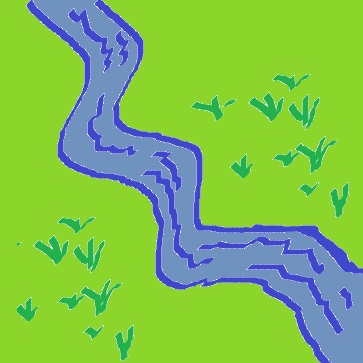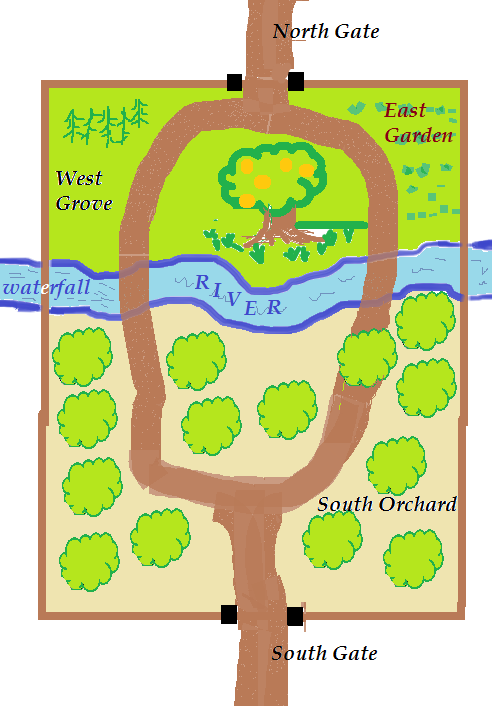
|
|
Dreaming of Eden
Where did the story of the garden of Eden come from? It is an ancient story, one with amazing insight into the human potential for both good and evil. Each time you look at the story with fresh eyes, new insights emerge. I like to imagine a narrator from ancient times telling the story of a legendary garden from long ago.
 In the beginning, we lived in the garden. Not just any garden; the garden.
The garden that lingers in memory like the sweet taste of honey in a cup of tea. Generations later, many of us would have dreams about the garden,
colorful, vivid dreams full of wonderful detail. When we began to realize that others had similar dreams, we started sharing details.
In the beginning, we lived in the garden. Not just any garden; the garden.
The garden that lingers in memory like the sweet taste of honey in a cup of tea. Generations later, many of us would have dreams about the garden,
colorful, vivid dreams full of wonderful detail. When we began to realize that others had similar dreams, we started sharing details.
Through sharing our dreams, a picture emerged.
It was a walled garden, the size of a village. Along the southern section of the garden there was an orchard, with trees bearing oranges, lemons, figs, olives, and pomegranates. In fact, there were hundreds of species of trees all around the garden, with edible fruit and nuts, strong branches and beautiful blossoms. The west side of the garden held a pasture of berries. In the east, there was a wild perennial garden of edible herbs, vegetables and grains. A river ran through the garden, and where the river turned into a waterfall, there were beautiful polished stones: onyx, lapis, turquoise and jasper. There were gates on each side: an east gate, west gate, south gate and north gate.
In our dreams, there was courtyard in the center of the garden with a majestic tree that had branches that spread out widely in all directions. This tree, which we call the Tree of Life, became a theme in many of our songs and stories.
As we savored these dreams, we wondered why we no longer lived in the garden.
There are times these days when village life is lovely, simple and innocent, reminiscent of how life must have been in the garden. But there are times when life is neither simple nor innocent. Village men and women are pressed into slavery; farmland and orchards are destroyed by war. Civilizations accumulate wealth to build huge monuments, lay out thousands of miles of roads, and construct ships for travel across oceans. Ships and roads bring trade, and nations exchange tools, healing medicines, spices, jewels and precious stones, but also bring weapons and even more wars.
We wondered how humanity could have become so complicated, so capable of doing both such good and such evil things. We looked at the contrast between ourselves and the animals that lived among us. We saw that humans alone labor all day to tame the wilderness around us; we alone sweat to feed ourselves; we struggle in childbirth more than any of the animals. But also we alone nurture babies who need a full year of infant care before learning to walk or talk; we alone weave blankets and beautiful clothes for our families and neighbors; we alone invent recipes to delight one another.
We tell a story about how we left the simplicity of the garden.
In our dreams, there was one tree in the far north side of the garden, by the northern garden gate. The tree had different names in our dreams, sometimes called the forbidden tree, the tree of pride, the tree of exile, or the tree of the knowledge of good and evil. Since the tree was near the gate, it symbolized the exit from the garden, symbolizing the transition from the simplicity of the garden to the complicated world full of knowledge of good and evil that we live in now.
Now the garden is hidden and gated, and we cannot return there.
So where do we go from here? This question has become the subject of songs, stories, and teachings for many generations. We have dreams and visions of a garden, a land, or a kingdom where trees can grow and where goodness and abundance are restored.
J.M.L.
November 2013